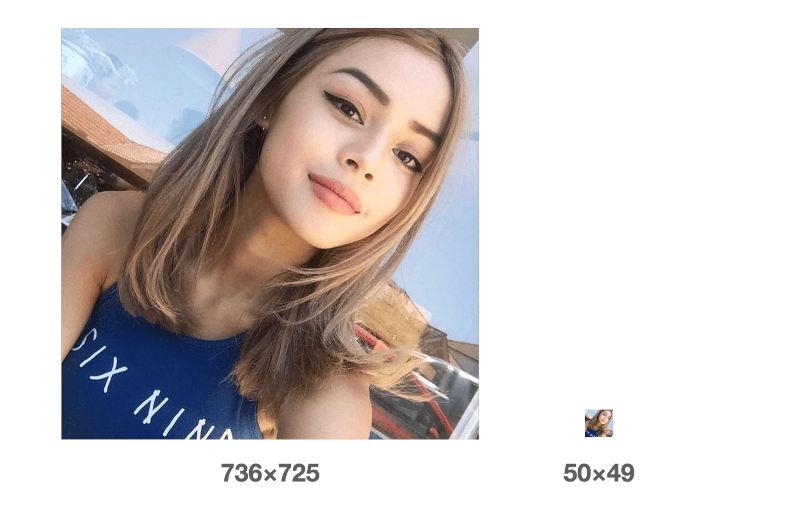Documentation
👋 Introduction
Smooth loader allows you smoothly lazy load images and background images. Lazy Loading defers the loading of an image that is not needed on the page immediately. An image, not visible to the user when the page loads, is loaded later when the user scrolls and the image actually becomes visible. If the user never scrolls, an image that is not visible to the user never gets loaded.
This package is a MUST-HAVE for every website containing multiple images on the page. It's surely the best lazy loading package on NPM that you can configure to your own needs.
🎁 Features
- 😍 Well-documented
- 😍 Written in TypeScript
- 😍 Very small package
- 😍 Loads images with IMG tag and backgrounds
- 😍 Loads images with a smooth fade in animation
- 😍 For image elements, you can show minified version of the image on initial page load
- 😍 Configurable
✍️ Usage
To make image element or background image lazy loaded:
- Add image URL to
data-srcattribute - Call
smoothLoader()function
Look at several options to choose images which you want to lazy load:
Using the default selector
Selects all images with smooth-loader class
import smoothLoader from 'smooth-loader'
smoothLoader()
Providing a custom class
Selects all images with 'lazy-image' class
import smoothLoader from 'smooth-loader'
smoothLoader('.lazy-image')
Providing multiple elements
Selects all the images with querySelectorAll method
import smoothLoader from 'smooth-loader'
const images = document.querySelectorAll<HTMLImageElement>('img')
smoothLoader(images)
Providing a single element
Selects the image with querySelector method
import smoothLoader from 'smooth-loader'
const myPhoto = document.querySelector<HTMLImageElement>('#me')
if (myPhoto) {
smoothLoader([myPhoto])
}
Note
Lazy loading works only when your elements are already in the DOM. Meaning, if images are loaded after the smoothLoader was executed, lazy loading will not work.
<!-- Regular image -->
<img
src="./images/me-min.webp"
data-src="./images/me.webp"
class="smooth-loader"
width="500"
height="500"
alt="Photo of Serhii Cho"
/>
<!-- Background image -->
<div
data-src="./images/we.png"
class="smooth-loader my-bg-image"
style="width: 500px; height: 500px"
></div>
🌄 Image preview
Description
One of the nicest features of Smooth Loader is the image preview. It allows you to show a small version of the image on the initial page load, and when the user scrolls into the image view, the larger version will be loaded and it will replace the small one.
Here is the example from one of the production-ready websites that uses Smooth Loader package:

You can check it out here yourself, just don't forget to set the network speed to "Slow 3G" in the browser's developer tools.
The small version of the image can be added to an src attribute on the image element and the bigger version to a data-src attribute like this:
<img src="/path/me-min.jpeg" data-src="/path/me.jpeg">
With this in place, users won't look at the empty place when image is loading.
When to use
Image Preview feature is useful in the following cases:
- When you have a lot of images on the page and you want to improve the user experience
- When users have a slow internet connection and images are loading slowly
- When you have few images on the page but they are heavy and take time to load
- When you have GIFs on the page that are loading slowly
Usage example
To use this feature, you'll need small versions of your images which will be loaded right away when the page loads. Let's say I have 2 same images with different sizes:

I want to load a small image on the initial page load, and when person scrolls into the image view, the bigger version will be loaded and it will replace the small one. In my HTML I will simply add an src attribute with path to a small image.
<img
alt="Beautiful girl"
class="smooth-loader"
src="images/1min.jpg"
data-src="images/1.jpg"
width="736"
height="725"
/>
Important
It's important to add width and height attributes or have width and hight setup correctly with CSS. Because small image has to be filling all the space that large image is taking. Additionally, adding width, height, and alt attributes to the image is a good practice for SEO.
Note
This feature works only for image elements, background images are not supported yet.
Instead of the small version of your image you can use any other small image, like a placeholder or a blurred image. It's up to you.
⚙️ Configurations
As the second argument, you can pass configurations. Some of the parameters extend Intersection Observer API.
smoothLoader('.lazy-image', {
root: document.querySelector('#scrollArea'),
rootMargin: '0px',
threshold: 1.0,
})
root: The element that is used as the viewport for checking visibility of the target. Must be the ancestor of the target. Defaults to the browser viewport if not specified or if null.rootMargin: Margin around the root. Can have values similar to the CSS margin property, e.g. "10px 20px 30px 40px" (top, right, bottom, left). The values can be percentages. This set of values serves to grow or shrink each side of the root element's bounding box before computing intersections. Defaults to all zeros.threshold: Either a single number or an array of numbers which indicate at what percentage of the target's visibility the observer's callback should be executed. If you only want to detect when visibility passes the 50% mark, you can use a value of 0.5. If you want the callback to run every time visibility passes another 25%, you would specify the array [0, 0.25, 0.5, 0.75, 1]. The default is 0 (meaning as soon as even one pixel is visible, the callback will be run). A value of 1.0 means that the threshold isn't considered passed until every pixel is visible.
🚀 Quick Start
# npm
npm i smooth-loader
# yarn
yarn add smooth-loader
import smoothLoader from 'smooth-loader'
smoothLoader()
By default, it will select all images with smooth-loader class.